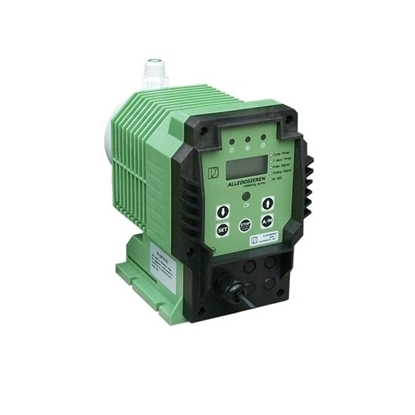What is a Dosing Pump?
Dosing pumps are specifically designed for dosing and transferring liquids. The vast majority of dosing pumps use the structure of piston pumps and diaphragm pumps, but also the structure of gear pumps because they can maintain a discharge pressure independent of the constant flow rate. Dosing pumps are available in thick sections and non-adjustable flow, the former is more widely applicable. The flow star is mainly adjusted by changing the stroke length, such as changing the crank radius, the plunger returns when the backstop position and the plunger rod and crosshead connection between the evolution, but also by changing the number of reciprocations or both methods to adjust the flow. Although the stroke length can be adjusted from zero to the maximum, to ensure dosing accuracy, it is generally limited to the range of 30-100%.

The dosing accuracy of the dosing pump refers to the accuracy of meteorological reproducibility, which is usually calculated by the maximum flow rate. In the 10- 100% adjustment range, the general dosing accuracy of the metered star pump is ±1% (special metered star pump accuracy is higher). The main factors affecting the dosing accuracy are the sealing of the plunger packing and the perfection of the suction and discharge valve work.
Plunger dosing pump has the advantages of high dosing accuracy, a wide range of adjustment, and high pressure, but there is leakage at the packing seal after the packing is corroded and sound damage will affect the dosing accuracy of the pump. The flow rate of this kind of dosing pump is generally 4-4DN0 liters/hour, and the pressure is below 5*105 PaL.
The main advantage of diaphragm dosing pump is no leakage, so it is especially suitable for occasions where the leakage is not allowed, such as conveying flammable, explosive, toxic, and radioactive media, and can also be used to convey the wave body containing the national body glitter, so it is developing rapidly. This kind of dosing pump flow - generally in 2500 liters per hour or less, the pressure can be up to 35 MPa.
The use of dosing pumps can complete the delivery, dosing, and regulation of three functions, thereby simplifying the production process, automation, and semi-automation, and improving product quality. Using multiple cylinders or multiple dosing pumps, several media can also be fed into the reactor in exact proportion for mixing.
Dosing pumps in the chemical, refining, pharmaceutical, food, and nuclear industries are increasingly used. The efficiency of dosing pumps is about 20%.
When operating the dosing system focus on the following matters:
- Dosing point pressure.
- Stroke frequency.
- Suction height.
- The altitude.
- Corrosiveness of chemicals.

